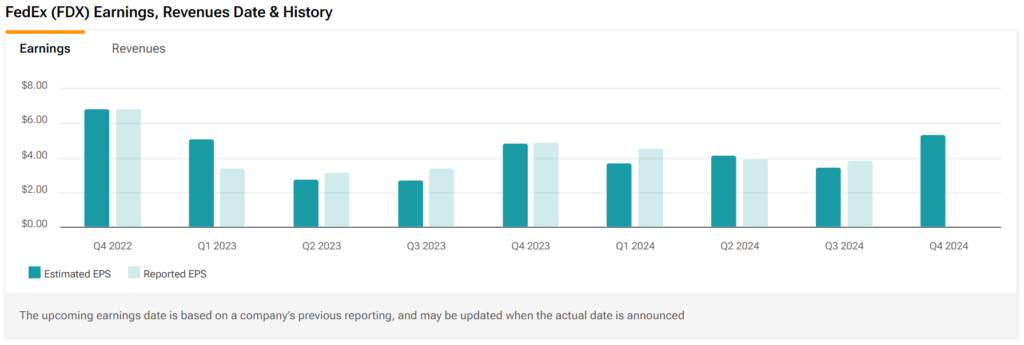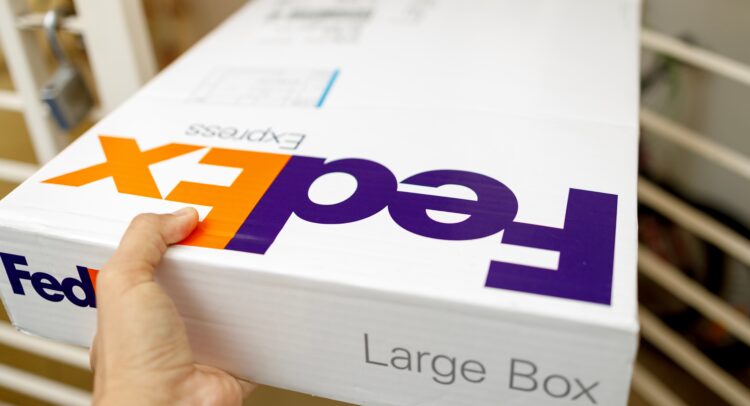Shares of transportation firm FedEx (NYSE:FDX) are up in today’s trading as investors await its Q4 earnings results on June 25 after the market closes. Analysts are expecting earnings per share to come in at $5.34 on revenue of $22.076 billion, which equates to 8.1% and 0.6% year-over-year increases, respectively, according to TipRanks’ data.
Stay Ahead of the Market:
- Discover outperforming stocks and invest smarter with Top Smart Score Stocks
- Filter, analyze, and streamline your search for investment opportunities using Tipranks' Stock Screener
This is ideal because earnings per share should grow faster than revenue as it demonstrates a high degree of operating and financial leverage in the business. In addition, it’s worth noting that FDX has beaten earnings estimates six times during the past eight quarters, as demonstrated in the image below.

Options Traders Anticipate a Large Move
Using TipRanks’ Options tool, we can see what options traders are expecting from the stock immediately after its earnings report. The expected earnings move is determined by calculating the at-the-money straddle of the options closest to expiration after the earnings announcement. If this sounds complicated, don’t worry, the Options tool does this for you. Indeed, it currently says that options traders are expecting a large 7.43% move in either direction.

Is FDX Stock a Good Buy?
Turning to Wall Street, analysts have a Moderate Buy consensus rating on FDX stock based on 12 Buys, seven Holds, and one Sell assigned in the past three months, as indicated by the graphic below. After an 11.4% rally in its share price over the past year, the average FDX price target of $305.44 per share implies 19.38% upside potential. However, insiders aren’t as confident.

When looking at insider activity, there seems to be a lot of selling. In fact, insiders have sold over $43 million worth of shares in the past three months. Although managers sell for many reasons, it’s still worth noting that the Insider Confidence Signal for FDX stock is Very Negative and well below the sector average, as shown in the picture below:











